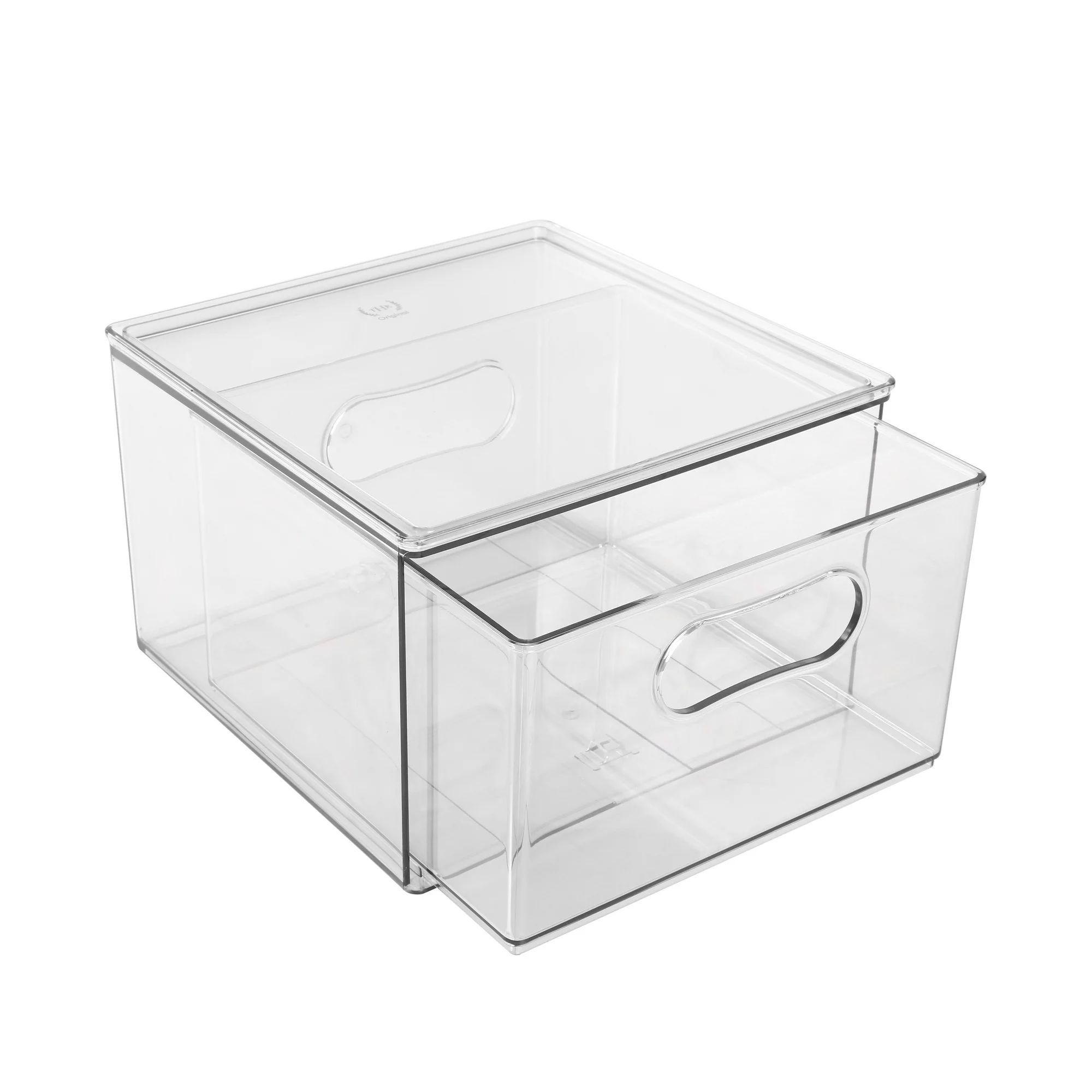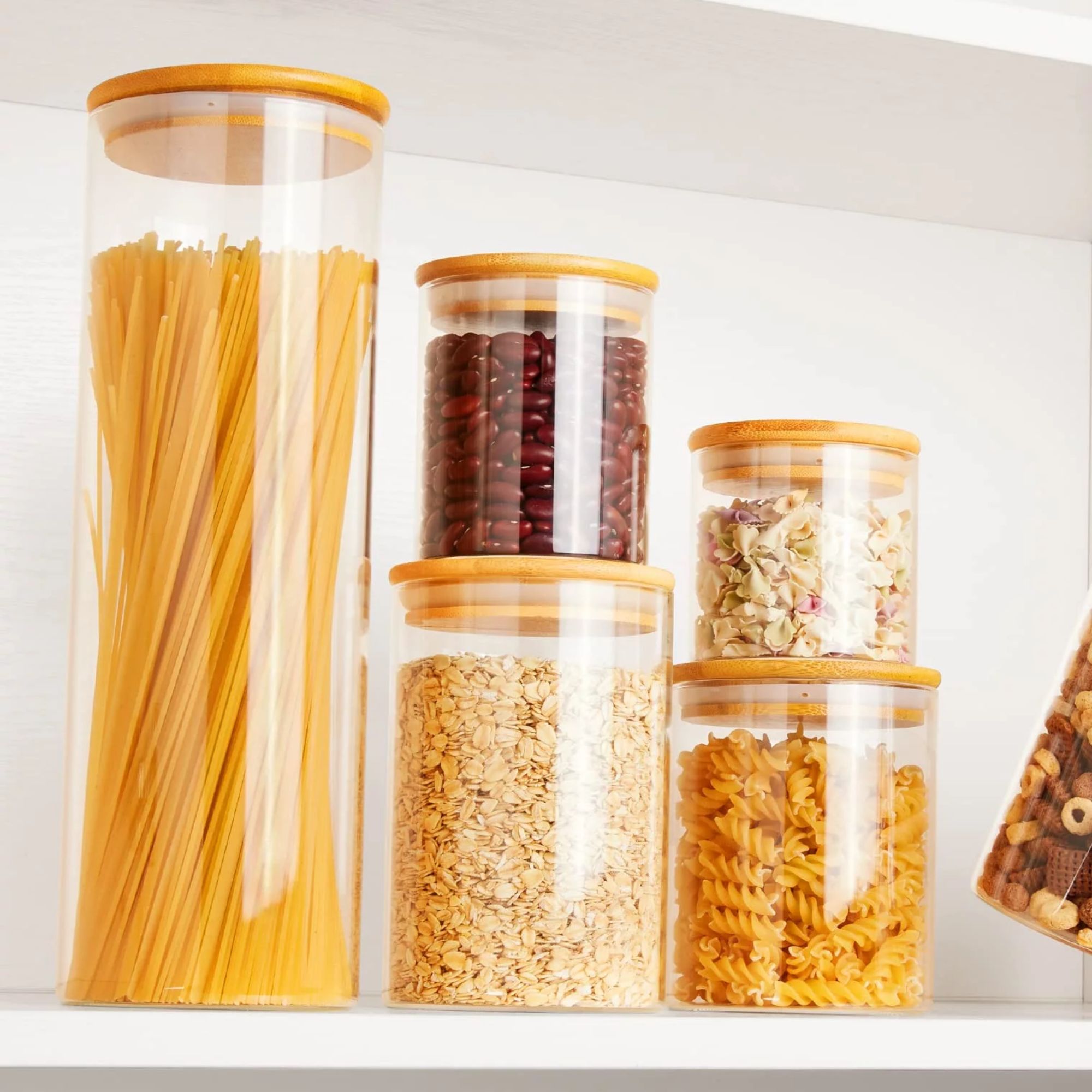How to organize kitchen cabinets to improve traffic flow
By implementing these 6 practical tips from experts, you can create a kitchen environment that seamlessly blends functionality with aesthetics


The kitchen is the heart of the home, and by organizing it well, you can make daily activities more seamless. Some thoughtful cabinet organizing can streamline access to kitchen essentials and improve the overall traffic flow, making meal preparation easier.
By considering your kitchen layout and how you use the space, you can determine how best to organize your kitchen cabinets to create a space that allows for effortless movement and easy access to all kitchen supplies.
Our experts have explained the simple ways to determine the optimal layout for your kitchen cabinet organization and some top tips for using them efficiently.
How to organize kitchen cabinets to improve traffic flow
'If you are getting frustrated using your kitchen to prep food and cook in, or are constantly getting in the way of one another, chances are you aren’t maximizing your kitchen's traffic flow,' says Richard Davonport, managing director at Davonport.
'One area that can be causing a headache is how you are organizing your cabinets. If nothing is in any sort of logical order or if you have random cooking essentials in different cabinets, then chances are you are going to struggle to use your kitchen effectively.
'Instead, think carefully about what storage you have on offer, where you prep, where you cook, and how you can store items within reach.'
1. Declutter and prioritize

Begin by decluttering your kitchen cabinets, making use of decluttering tips and removing items that are rarely or no longer in use to prioritize the essentials. These can be donated or discarded to free up valuable space.
Design expertise in your inbox – from inspiring decorating ideas and beautiful celebrity homes to practical gardening advice and shopping round-ups.
Streamlining your belongings ensures easy access to what you need, reducing unnecessary movements.
2. Use the 1-2-3 rule

Amanda Liford at Easy Life Organizing recommends using the 1-2-3 rule when determining how to organize kitchen cabinets to make traffic flow seamless: 'This is a rule that I developed to determine where to put items. For each item, ask yourself:
'1. Can you get it and put it away with 1 hand?
'2. Is it 2 steps from where it's used?
'3. Does it take 3 seconds to put away?
'For example: you would put cups two steps from the fridge, but not too high that you need to get a stool out because it would take more time to put them away. With this same thought, you may want to take your coffee mugs and separate them from your other cups if your coffee maker is in a different part of the kitchen.'
3. Zone planning

'Create designated zones in your kitchen based on functionality,' advises Sarit Weiss, founder and lead organizer of Neat & Orderly. 'Keep pots, pans, and cooking utensils near the stove for easy access while cooking. This minimizes the need to move around the kitchen while preparing meals, streamlining the cooking process.'
'The same can be said for storing chopping boards, knives and other items needed for meal prep in the relevant area, while a cutlery drawer makes sense near the dishwasher or sink so that items are easily put away,' says Richard Davonport.
'All of this means you are limiting the need to move around the kitchen unnecessarily which helps to maintain a good flow of traffic around the room.'
'Another tip I often implement in my designs is the incorporation of a designated 'drop zone' for groceries and everyday items,' recommends Steven Perez, founder of Kitchen and Range Hood. 'By allocating a specific cupboard near the entrance, these items are kept from blocking pathways and contributing to kitchen clutter.'
This zoning can reduce unnecessary movement and congestion.
4. Organize cabinets based on usage

Once you have created zones for certain activities, organize each cabinet space to best accommodate specific categories according to how often they are used.
Place frequently used items in cabinets that are easily accessible and close to the corresponding work areas, keeping the most commonly used items in the most accessible cabinets. 'Make sure these are kept at eye level or within easy reach,' says Sarit Weiss. 'This includes everyday dishes, glasses, and commonly used spices.
'This reduces the need to bend or stretch to access essential items, making your kitchen more user-friendly.'
You can also add storage solutions to this space that will make using them easier. Head of Solved here at H&G, Punteha van Terheyden, added a Joseph Joseph pot lid door organizer and it stopped the tsunami of cookware every time she opened the door of her busiest cabinet.
5. Invest in practical storage solutions

Next, consider implementing some smart storage solutions.
'Use drawer dividers to organize utensils and tools,' advises Yama Jason, interior designer and founder of House Customize. 'This prevents drawers from becoming cluttered and ensures that everything has a designated place, making it easier to find what you need without having to rummage through boxes.'
To make your lower kitchen cabinets more functional, Sarit Weiss recommends: 'Invest in pull-out shelves and lazy Susans for kitchen cabinets to maximize the accessibility of deep cabinets.
'These features make it easier to reach items stored at the back without having to rummage through the entire cabinet. This is especially useful for storing pots, pans, and larger kitchen appliances.'
'To utilize vertical space more efficiently, I often suggest the installation of shelf risers or hanging racks inside cabinet doors,' adds Steven Perez. 'This approach maximizes storage and minimizes clutter, which is crucial for maintaining an orderly kitchen.
'Lastly, it is paramount that your cabinet organization system is adaptable. Adjustable shelves or modular organizers are excellent for catering to changing needs without the need for major reconfiguration, which is key to preserving the flow.' We recommend this Jojocross expandable shelf organizer, from Amazon.
By considering what the difficulties you experience are in your kitchen you can determine the simple solutions that can make your cabinets easier to use.
6. Labeling and transparency

'In addition, employing clear containers and labels for pantry items enhances visibility, leads to quicker selection, and keeps traffic moving – especially during busy meal prep times,' says Steven Perez.
FAQs
How do you space your kitchen layout to optimize it's flow?
'Kitchen walkways have to be at least 36 inches wide, and work aisles in the front of sinks, home equipment, and prep spaces ought to be as a minimum forty-two inches wide. Consider going as much as 54 for work aisles for large households or everyday entertainers,' recommends Lorraine Thompson, home expert and founder of Best Florist Review.
'This affords easy movement behind a person who's working on the counter, sink, or appliance.
'If you opt to have a seating region on an island or peninsula, allow a minimum of 36 inches at the back of a stool while it's pulled out for easy passing.
'When you have the placement that you think you'll be keeping, test it out and be ok with making changes,' recommends Amanda Liford. 'It's also normal for changes to be made, don't expect it to be perfect the first time.'
Regularly assess your cabinet organization and adjust as needed. Adapting the organization of your cabinets according to your needs ensures a sustained improvement in your kitchen's traffic flow.
Next, learn how an affordable shelf riser can resolve a messy cabinet.

Lola Houlton is a news writer for Homes & Gardens. She has been writing content for Future PLC for the past six years, in particular Homes & Gardens, Real Homes and GardeningEtc. She writes on a broad range of subjects, including practical household advice, recipe articles, and product reviews, working closely with experts in their fields to cover everything from heating to home organization through to house plants. Lola is a graduate, who completed her degree in Psychology at the University of Sussex. She has also spent some time working at the BBC.








